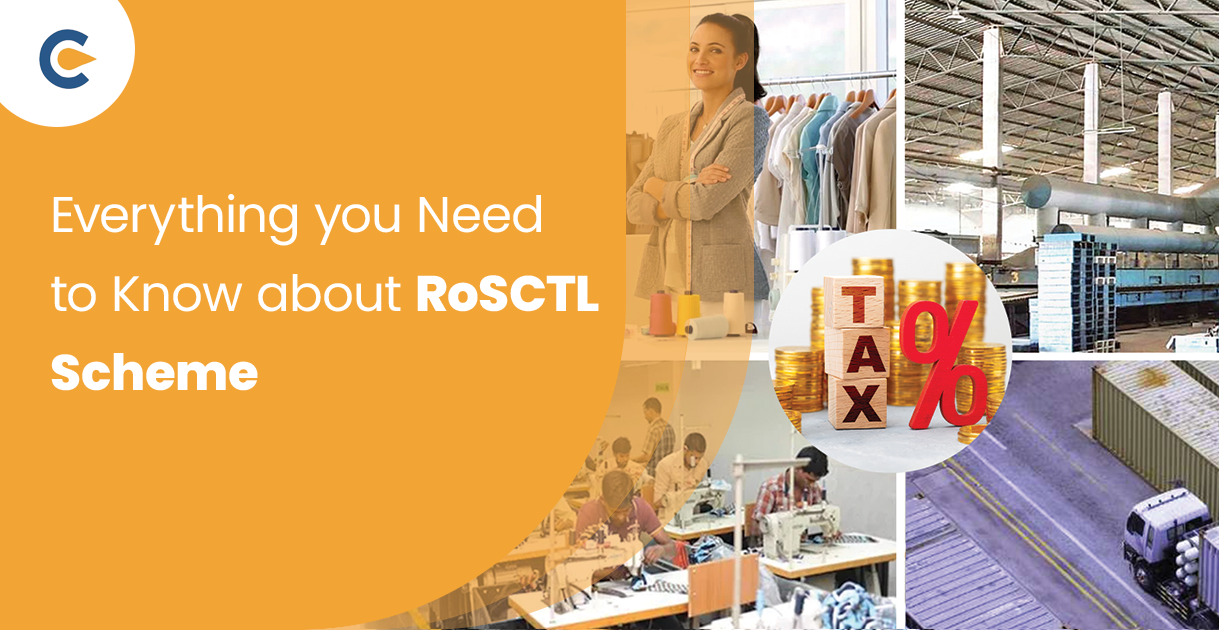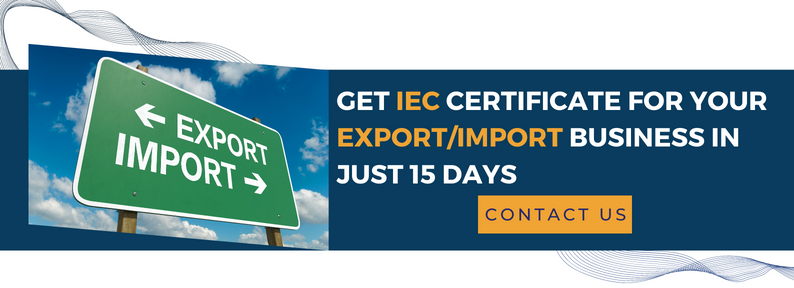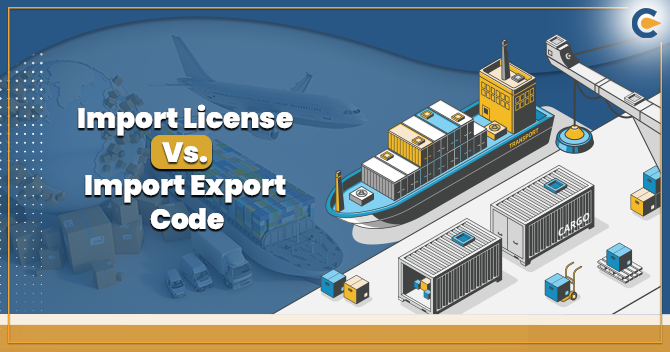The Rebate of State and Central Taxes and Levies Scheme (RoSCTL Scheme) is a significant export incentive framework introduced by the Ministry of Textiles in March 2019. It provides transferable and sellable duty credit scrips to exporters based on the Free on-board (FOB) value of their exports. This scheme replaced the Rebate of State Levies (RoSL) program, where Customs would directly deposit rebates into exporters’ bank accounts.
The introduction of the RoSCTL Scheme was prompted by growing international pressure, particularly from the United States, which urged India to discontinue export incentive schemes like the Merchandise Exports from India Scheme (MEIS). These schemes were deemed to violate the World Trade Organization’s (WTO) Agreement on Subsidies and Countervailing Measures. In addition to this, objections were raised against other schemes, such as Export Oriented Units (EOU), Export Promotion Capital Goods (EPCG), Electronics Hardware Technology Park (EHTP), Duty-Free Import Authorization (DFIA), and Special Economic Zones (SEZ), throughout 2019.
Although the MEIS is expected to continue until the new Foreign Trade Policy is introduced in April 2020, it is considered unsustainable as an export incentive in the long term. Consequently, the RoSCTL Scheme was introduced as an alternative to address the concerns raised by the WTO and international trade partners.
Advantages of the RoSCTL Scheme
The Rebate of State and Central Taxes and Levies (RoSCTL) scheme provides numerous advantages to exporters of readymade garments and made-ups, some of them are as follows:
- Reducing Operational Costs
The RoSCTL scheme has significant value for exporters as it addresses the major concern of high logistical and operations costs. By providing rebates on state levies, the scheme reduces the burden on exporters to provide enough cash flow to meet their goals, as they can offer their products at lower prices to their counterparts in the global market. It does not cut costs for a short-term gain; it underlines long-term benefits for exporters by improving the operating profit and ensuring competitiveness in the global market.
- Boosting Global Competitiveness
The RoSCTL scheme extends the relief beyond mere financial help; exporter competitiveness improves multifold across the globe. Indeed, in today’s world of options and convenience, competition is tough, and sustaining a competitive price is crucial. The scheme helps offset financial costs in several ways and subsequently allows exporters to dedicate more of their efforts towards product enhancement and expansion of the market. It, in turn, enhances their standing in international territory. It is not just a few individual exporters who are enriched and made prosperous, but the whole export sector is infused with new life.
- Financial Incentives for Growth
The benefits are more apparent and lucrative under the ROSCTL scheme, which motivates exporting firms to do more and achieve more. Such incentives and rebates also directly enhance the exporters’ profits. The scheme achieves this through financial support, which assists exporters in finding new markets, developing and improving technology and infrastructure, and creating new products. It aids in them benefiting from the new opportunities available or managing challenges that come up in the realization of sustainable export growth.
- Penalty-free Flexibility
Instead of reverting to measures that reduce the fees for late submission, as has been seen in some schemes, the RoSCTL scheme offers exporters indispensable flexibility without any sanctions. This flexibility takes into consideration the fact that international trade is dynamic and ever-evolving. Thus, a change in market conditions can be managed by exporters without the pressure of monetary losses. This way, exporters can focus on developing their export potential as much as possible without being hampered by too many formalities.
- Simplified Application Process
A notable advantage of the RoSCTL scheme is that its application is easy and efficient for exporters. Administrative procedures do not pose much of a concern to exporters since all they have to do is file and submit the ANF 4R form through digital signatures to the DGFT. Here, the applicant details should be provided like Name, Address, Import Export Code registration number, etc. This rather convenient approach not only helps exporters save time and effort but also makes this scheme comprehensible for exporters with different company sizes and levels of activity.
- Equal Support Across Regions
The amazing feature of the RoSCTL scheme is that no geographical constraint limits the liberty of exporting companies to claim the various incentives offered by the scheme. It must also be noted that the scheme tries to encourage any exporter situated at a non-EDI port to access equal incentives and opportunities. This integrated approach contributes not only to the development of regional economies but also to the benefits of the increased endurance and versatility of the export segment.
- Seizing Opportunities for Maximum Benefits
Opportunities that Can Be Availed If one thing is favorable in RoSCTL, it is its time-bound nature, which means one has to seize the opportunity whenever possible. The exporters have been advised to get the most from the scheme before the end of the stated period. By actively engaging in the scheme, the exporters are in a better place to achieve good financial results and ensure they continue enjoying success in exports to foreign markets.
Documents Required for RoSCTL Scheme Application
The significant documents required for the RoSCTL Scheme application are mentioned below-
- DGFT Digital Signature: This digital signature is, in fact, your ‘stamp of endorsement’ that helps to support the legitimacy of your application.
- Shipping Bill Copies: These documents provide shipment specifics, such as the destination and other related logistics information, as per the requirements of the respective official documents.
- Valid Registration Cum Member Certificate: This certificate acknowledges your enrollment to the ‘RoSCTL scheme’ as you are allowed to participate in this plan.
- Any Other Required Documents: Depending on your personal and/or work situation, many documents may be required. These could include certificates, licenses, or files that affirm or deny compliance with certain rules.
Step-by-Step Guide to Applying for the RoSCTL Scheme
The following are some strategies that exporters can use to easily go through the process of applying for the RoSCTL scheme and get an opportunity to exploit the benefits of the scheme.
1. Understand the Scheme: Get acquainted with the Rebate of State Levies (RoSCTL scheme), which grants duty credit scrips to garment and made-up exporters at the following specified rates.
2. Check Notifications: The Ministry of Textiles will notify you that they have prescribed rates under the RoSCTL scheme under various schedules.
3. Identify Applicable Rates: Check the schedules to determine the Central and State taxes and levies that you are going to pay for your exported goods.
4. Determine Eligibility: You must ensure that the exported goods conform to the requirements outlined in the schedules to be eligible for the RoSCTL regime.
5. Prepare Documentation: Use shipping bills and a valid Registration Cum Member Certificate as the documents to back your case.
6. File Application: You should indeed complete the RoSCTL application within one year from the date your shipping bill(s) is transferred from ICEGATE to the DGFT server.
7. Select Port of Registration: If the exports are from more than one EDI port, then give all the ports’ details in one application and select one port of registration from all the bills of shipping that are provided.
8. Submit Application: You should complete the application forms through the right channels and provide all the essentials.
9. Await Issuance: Expect the issuance of duty credit scrips based on the above rates as mentioned in the schedules for your exported products.
10. Retain Documents: Preserve the shipping bills or other related papers at least for three years from the date of issuance of scrip.
11. Comply with Authorities: Ensure that if you are required to present the documents, you can do so to the right authorities. This is under the provisions of the Foreign Trade (Development and Regulation) Act.
Recovery Mechanism
The following conditions are laid down under the Recovery Mechanism for the RoSCTL scheme:
1. Record Maintenance: It is also important to note that shipping bills and all records of other export documents should be preserved for 3 years starting from the date the Script was issued. It is for assessment, surveillance, and possibly rectification after the issue.
2. Excess Claim Recovery: If an exporter is offered more than the eligible amount deemed by the RA, the exporter must repay the excess claim with interest as per the provisions of the (Development and Regulation) Act 1992, and its Rules.
3. Non-Compliance: Otherwise, if the exporter does not refund the additional amount before the period of 30 days from the receipt of the RA or does not respond to it, the latter can take further action under the Foreign Trade (Development and Regulation) Act 1992, and its Rules.
Conclusion
Thus, the RoSCTL Scheme is an important export incentives plan initiated by the Indian government to boost the operations of the export sector, especially the textile industry. Under the scheme, transferable duty credit scrips corresponding to the FOB value of exports are provided to compensate for the various taxes and levies that distort the operational cost of exporters.
The RoSCTL Scheme complies with WTO regulations and the concerns of counterparts in international trade while providing a sustainable solution to the criticized Merchandise Exports from India Scheme (MEIS). Some benefits of the scheme have been the increase in global competitiveness, availability of funds for growth, flexibility that does not attract penalties, ease in the method of application, and equal reach across regions. Exporters should explore the possibilities the RoSCTL Scheme offers to boost export operations while strictly following the recovery measures and document retention provisions set out in the scheme.
Frequently Asked Questions
What is the RoSCTL Scheme?
The Rebate of State and Central Taxes and Levies (RoSCTL) Scheme is an export incentive framework introduced by the Indian government in March 2019. It provides transferable and sellable duty credit scrips to exporters based on the Free on-board (FOB) value of their exports.
Why was the RoSCTL Scheme introduced?
The scheme was introduced to address international pressure, particularly from the United States and the World Trade Organization (WTO), regarding India's export incentive schemes, such as the Merchandise Exports from India Scheme (MEIS), which were deemed to violate WTO regulations.
What are the key advantages of the RoSCTL Scheme?
Some of the key advantages include reducing operational costs for exporters, boosting global competitiveness, providing financial incentives for growth, offering penalty-free flexibility, simplifying the application process, and ensuring equal support across regions.
Who can apply for the RoSCTL Scheme?
The scheme is primarily targeted at exporters of readymade garments and made-ups in the textile sector.
What documents are required for the RoSCTL Scheme application?
Essential documents include a DGFT digital signature, shipping bill copies, a valid Registration Cum Member Certificate, and any other required documents depending on the exporter's specific situation.
How long do exporters need to retain documents related to the RoSCTL Scheme?
Exporters must preserve shipping bills and other export documents for at least three years from the date of issuance of the duty credit script.
What happens if an exporter receives an excess claim under the RoSCTL Scheme?
Suppose an exporter is granted more than the eligible amount deemed by the relevant authority. In that case, they must repay the excess claim with interest as per the provisions of the Foreign Trade (Development and Regulation) Act, 1992, and its Rules.
What is the recovery mechanism for non-compliance with the RoSCTL Scheme?
Suppose an exporter does not refund the excess amount within 30 days of receiving the notice or fails to respond. In that case, the relevant authority can take further action under the Foreign Trade (Development and Regulation) Act, 1992, and its Rules.
Read our article Detailed Procedure For Registering Under Startup India Scheme













